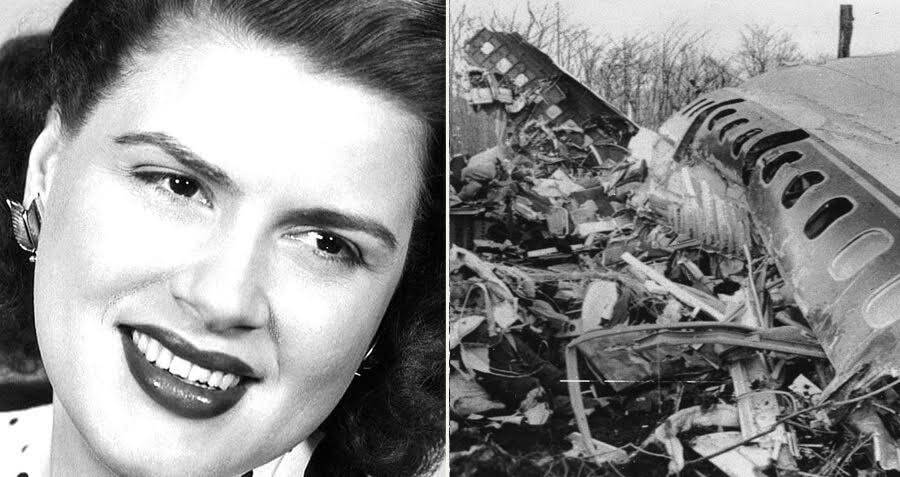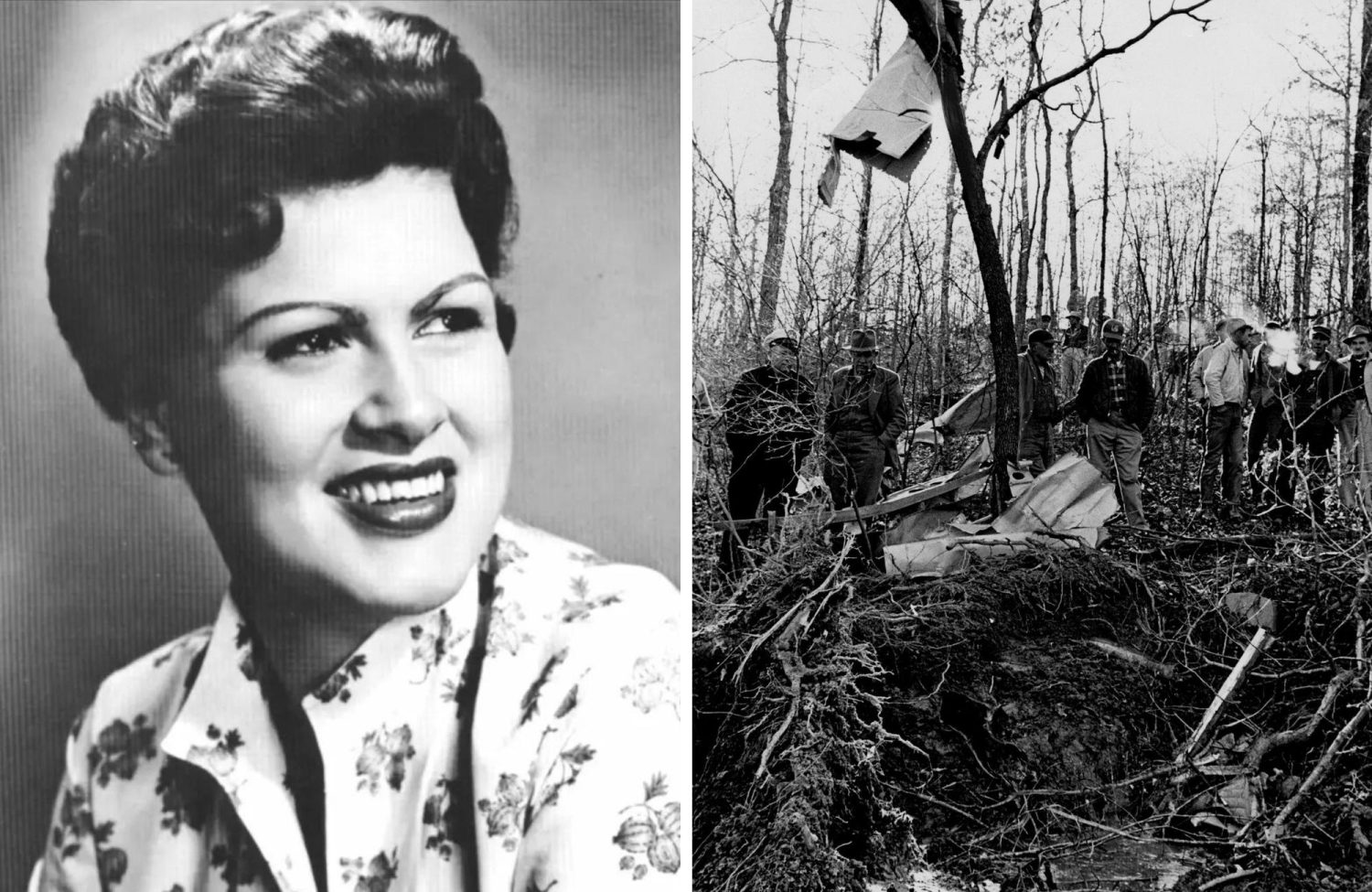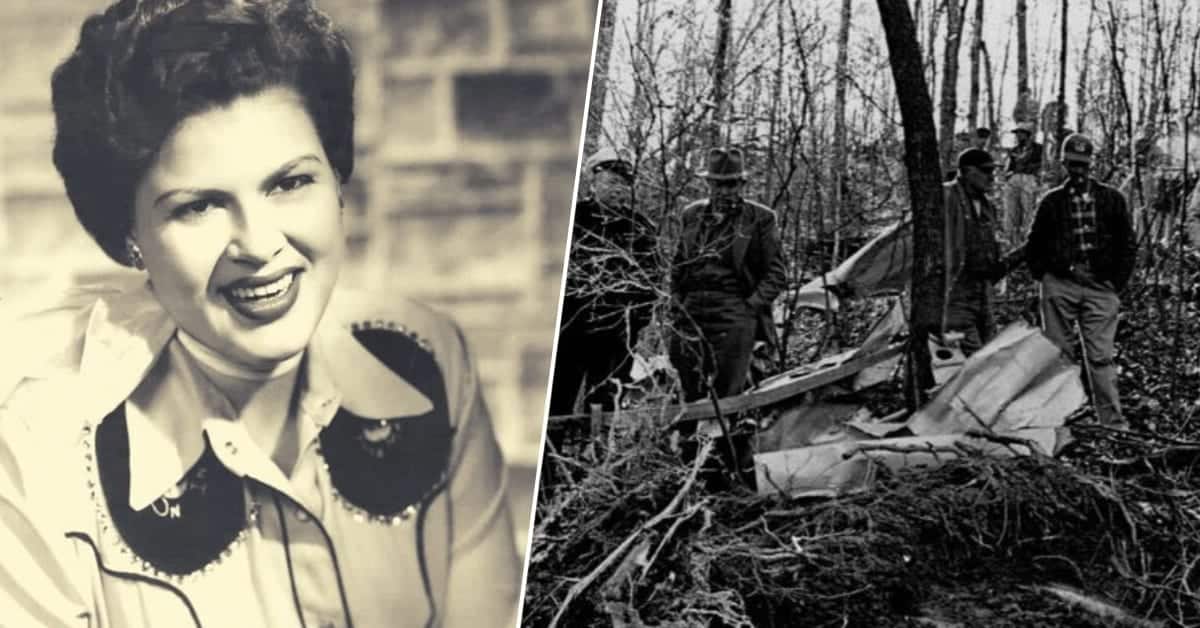A Detailed Account of the Patsy Cline Autopsy Crash Site
Patsy Cline remains an iconic figure in the realm of country music, known for her profound influence and distinctive vocal style that has left an indelible mark on the genre. Born Virginia Patterson Hensley in 1932, Cline emerged as a pioneering female vocalist in the 1950s and early 1960s, a period when country music was predominantly male-dominated. Her powerful contralto voice and emotive performances won her critical acclaim and a devoted following. Hits like “Walkin’ After Midnight,” “I Fall to Pieces,” and “Crazy” are timeless classics that showcased her ability to blend country with pop sensibilities, thus broadening the appeal of country music and paving the way for future generations of female artists. The tragic circumstances of her death led to a detailed investigation, including a ‘Patsy Cline autopsy’ which aimed to provide insights into the exact causes of the crash that ended her life and those of her companions.
Tragically, Patsy Cline’s burgeoning career was cut short on March 5, 1963, when a small aircraft carrying her and fellow Grand Ole Opry stars Cowboy Copas and Hawkshaw Hawkins, along with Cline’s manager and pilot, Randy Hughes, crashed near Camden, Tennessee. The group had been returning to Nashville from Kansas City, where they had performed at a benefit concert. The plane, a Piper Comanche 250, encountered severe weather conditions—rain, fog, and intermittent lightning—that proved disastrous. The crash not only claimed the lives of all aboard but also deeply shook the country music community and her extensive fan base.
This introduction to the circumstances surrounding the crash aims to provide insight into the profound loss felt by the music world and to honor the memory of one of its most beloved figures, whose legacy continues to influence and inspire.
| Name | Birth Name | Key Contributions | Notable Hits | Date of Death | Circumstances of Death |
|---|---|---|---|---|---|
| Patsy Cline | Virginia Patterson Hensley | Pioneering female vocalist in country music during a male-dominated era. Known for blending country with pop sensibilities. | “Walkin’ After Midnight,” “I Fall to Pieces,” “Crazy” | March 5, 1963 | Died in a plane crash near Camden, Tennessee, under severe weather conditions. |
Contents
Background
The tragic demise of Patsy Cline and her companions on March 5, 1963, was precipitated by a combination of adverse weather conditions and possible mechanical failure. On that fateful evening, as they flew over Benton County, Tennessee, the group encountered a treacherous mix of rain, fog, and low visibility—common hazards that have imperiled many small aircraft operations. The weather reports indicated misty conditions with intermittent lightning, which likely exacerbated the difficulties faced by Randy Hughes, the pilot, who was not instrument-rated and thus more vulnerable to the challenges posed by limited visibility. These factors contributed to the small Piper Comanche 250’s loss of control and eventual descent into a wooded hillside near Camden, Tennessee.

Key figures involved in the immediate aftermath of the crash included Jerry Phifer, the local police dispatcher. Phifer was among the first to receive news of the incident, alerted by a distressed call from a local farmer who reported hearing the plane’s engine sputter before it went silent. As the dispatcher, Phifer quickly coordinated the emergency response, setting the stage for a grim discovery. His role was pivotal in marshaling local resources, including law enforcement and emergency responders, to the crash site.
| Date | Event | Key Figures | Contributing Factors | Immediate Actions |
|---|---|---|---|---|
| March 5, 1963 | Plane crash near Camden, Tennessee | Jerry Phifer, police dispatcher; Randy Hughes, pilot | Adverse weather (rain, fog, low visibility), mechanical issues, pilot not instrument-rated | Jerry Phifer coordinated emergency response following a call from a local farmer who heard the plane |
Initial Discovery of the Crash Site
The crash site was first stumbled upon by W. J. Hollingsworth, a local cotton farmer, who, along with his son, set out at dawn to investigate the strange noises they had heard the previous night. The grim reality that met Hollingsworth was overwhelming. He reported to The Tennessean newspaper that the sight of the wreckage and the scattered remains of the victims nearly induced a nervous breakdown. The emotional toll of discovering such a harrowing scene was profound, affecting not only Hollingsworth but also the other early responders who arrived to assist.
Jerry Phifer, upon arriving at the site, confronted a scene of utter devastation. The small aircraft had disintegrated upon impact, leaving behind a sprawling debris field in the dense Tennessee woods. Phifer described the site as chaotic, with aircraft parts, personal belongings, and, most distressingly, human remains strewn across a wide area. In his later recounting to the television show “Friends and Company,” he spoke of the visceral shock of stepping inadvertently on human tissue, highlighting the intense and graphic nature of the scene. Such descriptions underscore the brutal impact of the crash, not just physically but emotionally on those tasked with the initial on-ground response.
The scene described by Phifer was not just a testament to the sudden and violent end met by the aircraft’s occupants but also served as a poignant reminder of the fragility of life. The responders, mostly local townspeople and authorities, were not seasoned disaster professionals, which made their exposure to such an extreme situation particularly traumatic. They had to navigate their emotional responses while performing their duties—securing the site, documenting the wreckage, and recovering the victims’ bodies.
The immediate aftermath of the crash thus paints a picture of a community thrust suddenly into the midst of a national tragedy, dealing with the shock and the spectacle of a beloved music icon’s untimely death under dramatic and violent circumstances. This event would mark the beginning of a prolonged period of mourning and reflection for the fans and fellow musicians of Patsy Cline, as well as a somber chapter in the history of country music, highlighting the risks faced by its stars in an era of intense touring schedules. The loss of Cline, Copas, and Hawkins served as a harsh reminder of the perils that musicians could face in pursuit of their careers, influencing future considerations for artist safety in the industry.
| Discoverer | Description of Scene | Key Figures | Impact on Responders | Community and Cultural Impact |
|---|---|---|---|---|
| W. J. Hollingsworth, local cotton farmer | Wreckage and human remains scattered, overwhelming sight | Jerry Phifer, police dispatcher | Profound emotional toll on early responders, shocking and traumatic scene | Intense mourning and reflection, reminder of the risks musicians face, influenced future safety considerations |
Roger Miller’s First-Hand Account
Roger Miller, a country music singer-songwriter known for his honky-tonk influences and distinctive style, played an unexpected role in the aftermath of the tragic crash that claimed the life of Patsy Cline and others. As a fellow artist, Miller was deeply connected to the community affected by the incident. His first-hand account of arriving at the crash site provides a harrowing insight into the immediate impact of the tragedy.

Upon hearing the news of the crash, Miller, along with his friend Don, drove to the site in the early hours, around 3:30 AM, guided by the need to provide any possible assistance. His journey through the dark, fog-laden woods was frantic, driven by a mix of dread and urgency. Miller recounted running through the underbrush, calling out the names of the friends he hoped to find alive. His discovery of the site was marked by shock and despair. As he told author Ellis Nassour, the sight of the wreckage and the realization of what had occurred left him overwhelmed with grief. Miller’s immediate emotional response—screaming their names as he approached and the devastation he felt upon finding them—underscores the deep bonds within the country music community and the personal impact of the loss.
| Individual | Action | Time of Action | Emotional Response | Impact on Community |
|---|---|---|---|---|
| Roger Miller | Drove to the crash site, ran through woods calling out names | Approximately 3:30 AM | Shock, despair, overwhelmed with grief | Highlighted deep bonds and personal impact within the country music community |
The Scene’s Details and Artifacts
The crash site itself was a stark testament to the tragic event. The small Comanche 250 had carved a path through the trees before impacting the ground, resulting in a deep crater surrounded by scattered debris over a 300-foot area. The impact had disintegrated much of the aircraft, leaving behind fragments strewn across the wooded hillside.
Among the debris, searchers found various personal items that painted a poignant picture of the last moments of the flight. Clothing, including pieces torn from the bodies upon impact, lay amid the wreckage. Personal items such as wallets, watches, and jewelry were recovered, helping to identify the victims whose bodies were severely mangled. Musical instruments, crucial to the identities of the artists on board, were also found damaged beyond recognition. This included parts of guitars and possibly other equipment, adding a layer of tragedy reflecting the victims’ artistic lives.
Notably, specific items stood out, serving as somber reminders of those lost. Hawkshaw Hawkins’ white belt, inscribed with his name in gold, was found near a cowboy boot, a stark contrast to the surrounding mud and broken foliage. Patsy Cline’s presence was marked by a gold slipper, believed to be worn by her at the time of the crash, found isolated on the ground—a mute testament to the violence of the crash. A red slip, reportedly belonging to Cline, was eerily suspended from a tree branch overhead, illustrating the brutal force with which the plane had met the earth.
| Site Description | Items Found | Specific Items Noted | Symbolic Significance |
|---|---|---|---|
| Small Comanche 250 plane crash resulted in a deep crater and scattered debris over a 300-foot area. | Clothing, wallets, watches, jewelry, damaged musical instruments. | Hawkshaw Hawkins’ white belt, Patsy Cline’s gold slipper, a red slip suspended from a tree. | Items reflect the last moments and identities of the victims, illustrating the violent impact of the crash. |
Impact on the Music Community
The loss of such prominent figures as Patsy Cline, Hawkshaw Hawkins, and Cowboy Copas in one tragic event sent shockwaves through the music industry. Roger Miller’s personal narrative and the haunting scene of the crash highlighted not only the perils faced by touring musicians of that era but also the close-knit nature of the community. The tragedy prompted a reflection on the risks associated with small aircraft travel, which was common for touring artists at the time.

This event also cemented a collective sense of vulnerability among artists and fans alike, underscoring the harsh realities of the music industry. Memorials and tributes poured in, reflecting the profound respect and affection held for the victims. The crash did not just end lives; it also sparked discussions on improving safety standards for artist travel, leaving a lasting impact on how the music community approached tour logistics in subsequent years.
The detailed account of Roger Miller, combined with the evocative scene at the crash site, thus serves not only as a record of a tragic event but as a catalyst for change and reflection within the music community, highlighting the personal connections and shared vulnerabilities within this artistic family.
| Event Impact | Community Response | Safety Reflections | Long-term Effects |
|---|---|---|---|
| Shockwaves through the music industry due to the loss of Patsy Cline, Hawkshaw Hawkins, and Cowboy Copas. | Memorials and tributes, highlighting profound respect and affection for the victims. | Triggered reflections on the risks of small aircraft travel common among touring artists. | Sparked discussions on improving safety standards for artist travel, influencing tour logistics. |
Aftermath and Legacy
The impact of the plane crash that claimed the lives of Patsy Cline, Cowboy Copas, Hawkshaw Hawkins, and Randy Hughes resonated deeply within the music industry and among their extensive fanbase. Cline, in particular, had transcended the typical boundaries of country music to become a national treasure, and her sudden loss was felt as a profound tragedy. The deaths of these key figures led to an outpouring of grief and marked a significant moment in the history of country music, emphasizing the communal bonds among artists and fans alike. The tragedy underscored the risks associated with the often hectic and improvised travel arrangements that were commonplace in the music industry of the time.
In the days following the crash, the crash site itself became a focal point not just for investigators and mourners but, regrettably, also for looters. Reports emerged of individuals scavenging through the wreckage, looking for memorabilia and personal items of the deceased artists. This unfortunate aftermath highlighted a darker facet of public fascination with celebrity tragedies, prompting local authorities to take measures to secure the area and preserve the dignity of the site.
Recognizing the significance of the location, efforts were soon undertaken to transform the site into a memorial. A plaque was erected to commemorate the lives of the musicians lost in the crash, and the area was designated as a place where fans could come to pay their respects. Over time, it evolved into a pilgrimage site for fans of Cline and the other artists, where people could leave messages, flowers, and other tokens of remembrance. This act of memorialization helped to contextualize the crash not just as a moment of loss but as a point of collective memory for the music community.
| Impact of Crash | Immediate Aftermath | Memorialization | Cultural Significance |
|---|---|---|---|
| Profound tragedy felt deeply within the music industry; significant moment in country music history. | Site attracted investigators, mourners, and looters; local authorities intervened to secure the site. | Erection of a plaque and designation of the area as a memorial site for fans to pay respects. | Transformed into a pilgrimage site, symbolizing collective memory and the communal bonds within the music community. |
Reflecting on the legacy of Patsy Cline and her fellow passengers, it is clear that their influence extended far beyond their musical achievements. Cline, in particular, is remembered not only for her distinctive voice and emotive performances but also as a symbol of resilience and trailblazing success in a male-dominated industry. The loss of such towering figures in a single incident served as a somber reminder of the vulnerabilities faced by touring musicians. Their passing had a lasting impact on the practices within the music industry, particularly concerning the safety protocols surrounding travel for performing artists.
The significance of the crash also reverberates in the broader context of music history and aviation safety. It highlighted the need for stricter regulations and more cautious planning for travel arrangements, particularly in adverse weather conditions and for night flying. The tragedy led to increased advocacy for improved safety measures and heightened awareness about the potential dangers of small aircraft travel, especially under challenging conditions.
Thus, while the crash was a tragic event, it also served as a catalyst for change, prompting improvements that would benefit future generations of artists. The legacy of Patsy Cline and her companions continues to influence both the music industry and its fans, reminding us of the human costs of fame and the enduring impact of their artistry on American culture and beyond. Their memory lives on, not only through their music but also through the lessons learned in the aftermath of their untimely deaths.
Global News -Reveals Methamphetamine in Eric Harris’s Autopsy System
The Controversial Death of Pat Tillman Autopsy Suspicions
Lone Survivor of the Paria Fuel Incident
Why Logan Choice in Leaving Out the Westchester Incident
The Truman Doctrine Shaping U.S. Foreign Policy in 1947
Ahead of NFL Draft Denver Broncos New Uniforms Leaked
Basketball Stars Paige Bueckers and Kamilla Cardoso